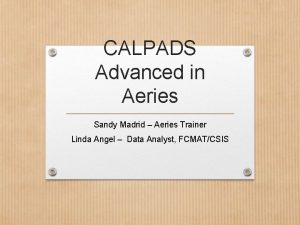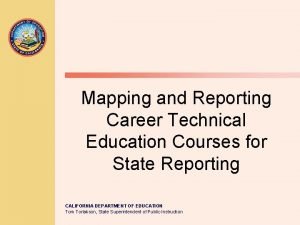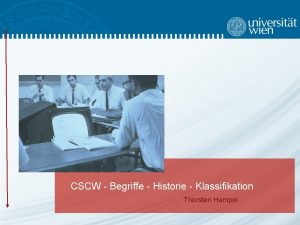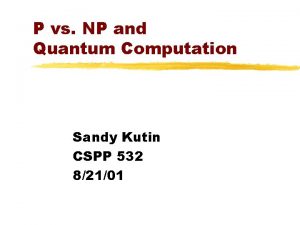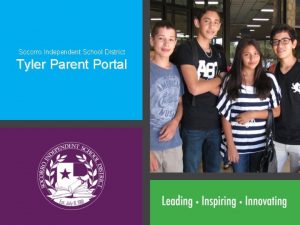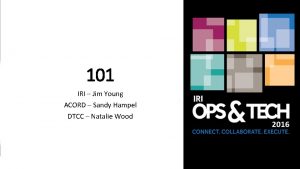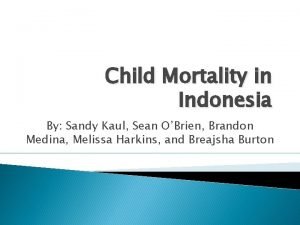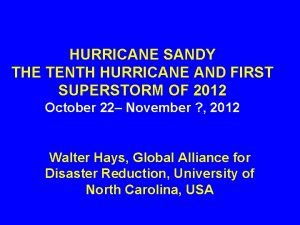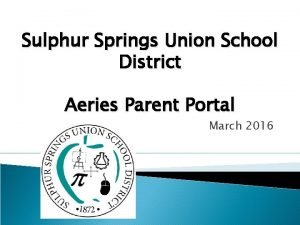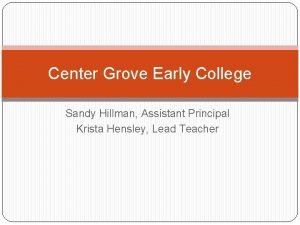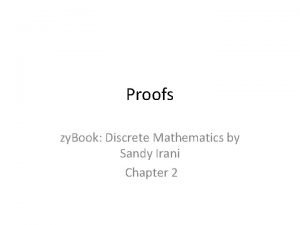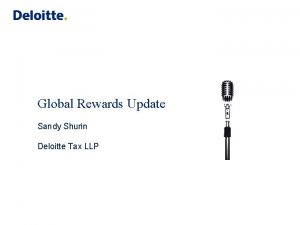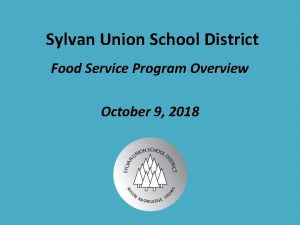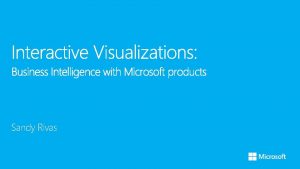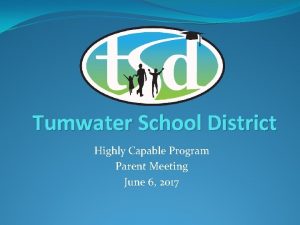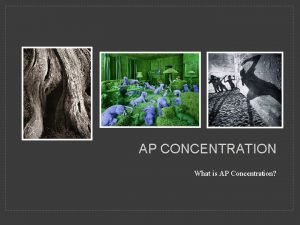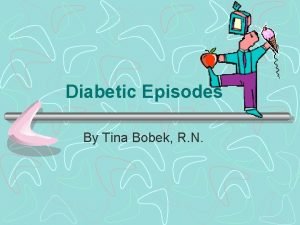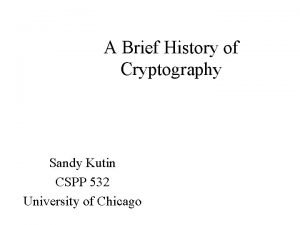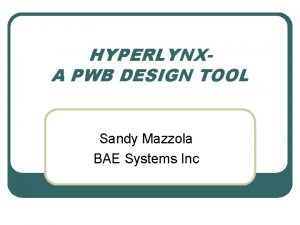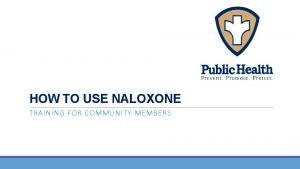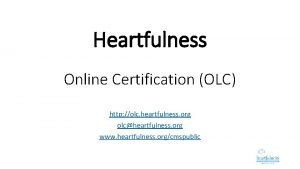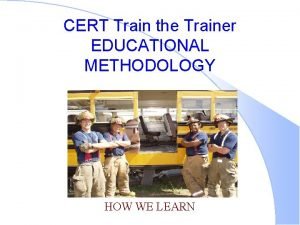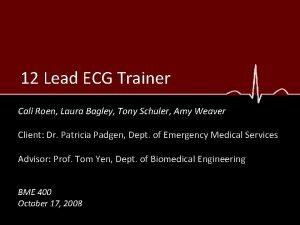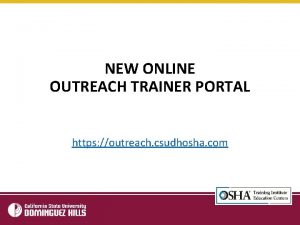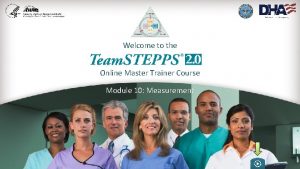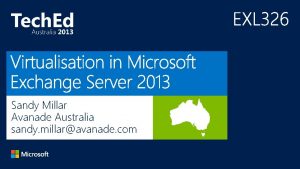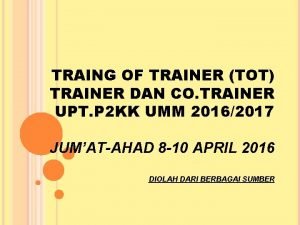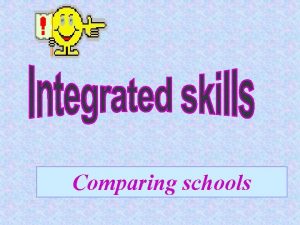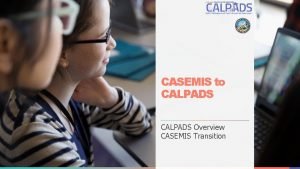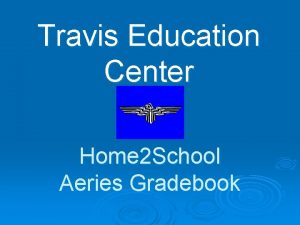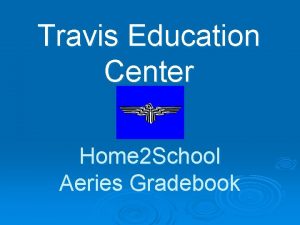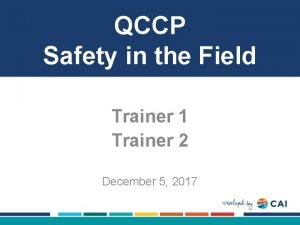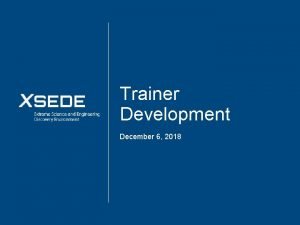CALPADS Advanced in Aeries Sandy Madrid Aeries Trainer


































































- Slides: 66

CALPADS Advanced in Aeries Sandy Madrid – Aeries Trainer Linda Angel – Data Analyst, FCMAT/CSIS

Advanced CALPADS Information provided and open for discussion Programs – o Eligibility vs Participation o Business rule behind each program o Military Program NEW Guidance o 504 NEW Guidance o SPRG 0070 o Programs in Aeries o FRPM – LCFF Direct Certification CASEMIS to CALPADS Exits Reasons – NEW Guidance California School Dashboard o Dual Enrollment - NEW Guidance o Cohort Data - NEW Guidance SELA Data CTE - NEW Guidance STAS - Student Attendance Summary SDIS – Student Discipline Data The intent of this session is to have open discussion on new or hot topics. Agenda Items with “New Guidance” will be covered. The remaining topics we very rarely complete due to time constraints however the information is provided for your reference

CALPADS System Documentation Page

Program Data Source on Programs taken from CALPADS Data Guide found on the CALPADS System Documentation Page: http: //www. cde. ca. gov/ds/sp/cl/index. asp Understanding Eligibility vs Participation CALPADS automatically defaults Education Programs as either eligible or participating based on specific program. The following definitions should provide clarity regarding the differences between student program eligibility and student program participation. Student Program Eligibility means that a given student has met all of the criteria to receive services for an education program; however, the student may not necessarily be receiving services. Here are the programs for which eligibility is collected: Free Meal Program - 181 Reduced-Price Meal Program - 182 Gifted and Talented Education (GATE) - 127 Migrant Education - 135 Special Education - 144 Homeless - 191 Armed Forces Family Member - 192 Student Program Participation means that a given student has met all of the criteria to receive services for an education program, and that student is receiving services. CALPADS designates programs as follows Here are the programs for which participation is collected: Title I Targeted - 122 Title I Part A Neglected - 171 Pregnant or Parenting - 162 Transitional Kindergarten - 185 504 Accommodation Plan = 101 Opportunity Program - 108 California Partnership Academy - 113

Here are some guidelines regarding start and end dates for student program Eligibility : A student’s program eligibility (i. e. , the student has met the criteria to receive services) start date does not need to be within the student’s enrollment at a school. Eligible records should be left open unless NSLP see below Special Education Program records should NEVER be enddated unless the student actually exits the Special Education Program; e. g. , parent withdrawal from the program, the student aged-out of the program, or the student is determined to be ineligible for services. Additionally, the program start date should never change. If students are eligible for Free Meal Program or Reduced Price Meal Program, their program records are automatically closed upon exit because eligibility is valid for only one year and must be re-determined annually. The records are automatically closed when any Student Exit Reason is populated (except E 150 – Mid. Yr. Enrollment. Update) For students exiting the school or transferring to another school with any Exit Reason Code other than E 155 and E 150 (Mid. Yr. Enrollment. Update), the eligibility program records do not need to be closed. For students transferring to another school, a new program record must be submitted indicating the student’s eligibility for the given program, The student does not need to be exited from the program in the previous school. Here are some guidelines regarding start and end dates for student program Participation: • A student’s program participation start date must be within the student’s enrollment period at a school. • For students exiting the school or transferring to another school with any Exit Reason Code, other than E 155 and E 150 (Mid. Yr. Enrollment. Update), CALPADS will automatically populate the program exit date with the Enrollment Exit Date (for programs for which we capture participation data). • If a student transfers to a new school, a new program record must be submitted indicating the student’s participation in the given program with a new start date that is within the student’s start date at the new school.

Program data continued Program Name Program Definitions The program start date… Must be in the current academic year for Free Meal Program - 181 each reporting year. NSLP Represents the date an approved NSLP meal Eligibility application was received. The program end date… Should LEAs close these records at the end of the year or when the student exits the school? Yes. These records must be closed annually and a new eligibility determination must be made Represents the date annually. that the student exited the school for NOTE: Records for students who exit a school the academic year. with an exit code other than E 150 will be autoclosed by CALPADS. Reduced-Price Meal Program – 182 NSLP Eligibility Must be in the current academic year for each reporting year. Represents the date an approved NSLP meal application was received. Yes. These records should be closed annually and a new eligibility determination must be Represents the date made annually. that the student exited the school for NOTE: Records for students who exit a school the academic year. with an exit code other than E 150 will be autoclosed by CALPADS. Gifted and Talented Education (GATE) – 127 Eligibility Represents date the student was determined to be eligible for the GATE program within a school. Does not mean the student is participating in the GATE program Represents the date the student was exited from the GATE Program at a school. No. These records should not be closed annually for returning students. For students exiting the school, these records may, but are not required to be closed.

Program data continued Program Name The program start date… The program end date… Should LEAs close these records at the end of the year or when the student exits the school? Represents the date the student was determined to be eligible for the Represents the student’s Migrant Program (at any school in Migrant Education – eligibility period expired; or California) for a particular eligibility 135 period (maximum of three years). If The date the student was the student is determined to be Eligibility determined to be ineligible for eligible again, then a new record services within a school. should be submitted with a new start date. No. These records should not be closed annually for returning students. For students exiting the school, these records may, but are not required to be closed. Represents the date that the student exited the special education program. Does NOT represent the date the student Represents the initial date the exits a school. Does NOT student’s special education services Special Education – 144 represent that date a student’s began. This date should NEVER primary disability changes change – Additional information Eligibility under Casemis to CALPADS (slide 22, Additionally changes in a 23) source Flash 128 student’s primary disability, should not initiate creating a new start date. This data is not tracked longitudinally. No. These records should not be closed annually for returning students or students who are exiting because their eligibility for the program does not end.

Program data continued Program Name The program start date… The program end date… Homeless – 191 Eligibility Represents the first date a student was identified as Represents the date a student homeless at any school in California. If a student’s eligibility was identified as being no longer is re-verified annually, the homeless, or; The last day of the previous record should be closed school year and a new record should be submitted with a new start date. Military Family – 192 Eligibility Represents the date a student became eligible based on the parent’s most recent active Represents the date a student military status. was identified as being no longer Must be on or after the student’s considered armed forces family birthdate, even if the parent’s member, or; active military date was prior to The last day of the school year the birthdate. (See FAQ for additional guidance. ) Recently Should LEAs close these records at the end of the year or when the student exits the school? No, homeless records are not required to be closed at the end of the year or for students who are exiting. From Flash update 121 - LEAs should RECONFIRM homelessness at the beginning of the school year and close homeless program records for students who are no longer homeless. Optionally, LEAs may close out all homeless program records every year and then open a new program record for the new year (Flash 121) No. These records should not be closed annually for returning students. For students exiting the school, these records may, but are not required to be closed updated Title I Targeted – 122 Participation Represents the first date a student was identified as participating in the program at a school. Represents the date a student ceased participating in the program at a school; or The last day of school Yes. These records should be closed out annually and resubmitted the following academic year with a new program start date and Title I Services (Education Service Code) a student is receiving. NOTE: Records for students who exit the school with an exit code other than E 150 or E 155 will be auto-closed by CALPADS.

Program data continued Program Name The program start date… The program end date… Should LEAs close these records at the end of the year or when the student exits the school? Title I Part A Neglected – Represents the first date a 171 student was identified as participating in the program at Participation a school Yes. These records should be closed annually Represents the date a student and resubmitted at the beginning of the school ceased participating in the year if the student continues to participate. program at a school; or The NOTE: Records for students who exit the school last day of school with an exit code other than E 150 or E 155 will be auto-closed CALPADS. Represents the first date a student was identified as Pregnant or Parenting – participating in the program at 162 a school. LEAs may send up a program record for Participation pregnant/parenting students even if they are not participating in an actual program. No. These records are not required to be closed at the end of the year for returning students. However, it is best practice to verify this Represents the date a student annually and LEAs can opt to close these ceased participating in the records annually if it helps to facilitate the program at a school, or is no reverification process. NOTE: Records for longer parenting. students who exit the school with an exit code other than E 150 or E 155 will be auto-closed CALPADS. Transitional Kindergarten – 185 Participation Represents the first date a student was identified as participating in the first year of a transitional kindergarten program at a school Represents the last day of the student’s first year of participation in the transitional kindergarten program Yes. These records must be closed at the end of the student’s first year of participation in the Transitional Kindergarten program or will be auto-closed upon a student’s exit.

Program data continued… Program Name The program start date… The program end date… Should LEAs close these records at the end of the year or when the student exits the school? Represents the date the student was no longer eligible Yes. These records must be closed upon the for a 504 Accommodation plan; 504 Accommodation Represents the first date of the expiration of the students 504 Accommodation or, Plan – 101 CURRENT academic year that a plan. 504 plans must be re-evaluated annually. student was identified as The date the 504 Participation having a 504 accommodation NOTE: Records for students who exit the Accommodation plan expired plan school with an exit code other than E 150 or for the academic year (the E 155 will be auto-closed by CALPADS. student must be reevaluated Recently for services annually) updated Represents the date a student Opportunity Program – Represents the first date a ceased to participate in an 108 student was identified as Opportunity Program at a participating in the program at school; or Participation a school The last day of school. No, these records are not required to be closed at the end of the year for returning students. However, best practice is that this be verified annually and LEAs can opt to close these records annually if it helps to facilitate the reverification process. NOTE: Records for students who exit the school with an exit code other than E 150 or E 155 will be auto-closed.

Program data continued… LEAS are to report Armed Forces Family Member Program Records Flash #133 – https: //www. cde. ca. gov/ds/sp/cl/calpadsupdflash 133. asp Armed Forces Family Member Armed Forces subgroup as of 20172018 for accountability calculations. A student is considered to be an Armed Forces Family Member if at least one parent is an Armed Forces member, on active duty or serves on full-time National Guard duty. The terms “armed forces”, “active duty” and “full-time National Guard duty” as defined by sections, 101(a)(4), 101(d)(1) and 101(d)(5) of the United States Code are: 101(a) (4) - The term “armed forces” means the Army, Navy, Air Force, Marine Corps, and Coast Guard. 101(d) (1) - The term “active duty” means full-time duty in the active military service of the United States. Such term includes full-time training duty, annual training duty, and attendance, while in the active military service, at a school designated as a service school by law or by the Secretary of the military department concerned. Such term does not include full-time National Guard duty. 101 (d) (5) - The term “full-time National Guard duty” means training or other duty, other than inactive duty, performed by a member of the Army National Guard of the United States or the Air National Guard of the United States in the member's status as a member of the National Guard of a State or territory, the Commonwealth of Puerto Rico, or the District of Columbia under section 316, 502, 503, 504, or 505 of title 32 for which the member is entitled to pay from the United States or for which the member has waived pay from the United States

Programs in Aeries Accessed from the navigation tree under the Student Data then the Programs node. If an Aeries table is available for the Educational Program, use the table instead of the Special Programs (PGM Table) form. Examples are Special Education and Free and Reduced Meals. For GATE either the GATE page or the Special Programs form can be used, but not both. For 504 program, either the 504 page or the Special Programs form can be used, but not both.

SPRG 0070 Error Description of Error found in the CALPADS Error Document located on the CALPADS System Documentation Page http: //www. cde. ca. gov/ds/sp/cl/index. asp Definition: SSID has an existing/matching overlapping Education Program record existing in Staging or ODS Figure 1 – Record Rejecting SPRG 1234_344 FCMAT/CSIS School A 123456789 1234 First Name Last Name 20000313 F 127 20170123 The record that is rejecting (Figure 1), if allowed to post, would create overlapping records for the same program as there is already a program 127 for this School during that time in the ODS (Figure 2), this would cause a conflict in data and go against business rule, thus the SPRG 0070 is triggered Figure 2 – Program Data in the ODS FCMAT/ CSIS School A 8 -17 -2016 6 -1 -2017

What is causing the problem in Aeries and how to correct? CALPADS allows you to leave the record open but The Aeries SPRG extract will extract with the enrollment date instead of the older start date and cause the SPRG 0070 errors. We tried to adjust the SPRG to skip records if the start date was in a previous year and there was no end date but it caused errors when students left and returned or changed schools. Districts would have to manually add new records. We feel the safest way to ensure correct reporting and not skip active records is the procedure below: In Aeries, because 504 is a Participation program, an open record will be extracted with the enrollment date of the current year. If districts don't close out or manage the 504 records (or any participation programs) year to year in Aeries then they need to run the SPRG ODS to close it out. Leaving an open participation program record in Aeries causes the SPRG 0070 errors. We did add a Copy button in Aeries web to help adding new records for the new school year. For the help doc search: SPRG Reconciliation Documentation.

NSLP - FRPM – SED – ED Eligibility Definitions 1. NSLP National School Lunch Program 2. FRPM Free, Reduced Price Meals 3. SED Socio-Economically Disadvantaged NSLP Eligible is defined as : FRPM Eligible is defined as: SED Eligible is defined as: • Eligibility for the Free Meal Program (181) or the Reduced-Price Meal Program (182) via an approved application. NSLP program records carry a one-year designation and must be closed yearly. • FRPM Eligible #2 • NSLP Eligible #1 Or • ü ü ü Eligibility for Migrant Program or Homeless Program or Foster Youth programs Or • Students who are Directly Certified Note: LEAs do not need to submit NSLP records for students found to be eligible based on the state direct certification process conducted by CALPADS. LEAs should submit NSLP records for students found to be eligible for free meals based on a local direct certification process. Or 4. ED Economically Disadvantaged ED Eligible is defined as: Same as #2 – FRPM Note: Economically Disadvantaged does NOT • If Parent Education level include Parent Level of (both parents) are Education and is used for reported as not a high CTE only, it is one of the school graduate. Core Indicators

Two Sides to FRPM Data FRPM Eligible Year Round FRPM Eligible on Census Day & LCFF • NSLP Application Process • Based on information day enrollment • CALPADS Direct Certification • Eligibility determined via application received by • COE Direct Certification 10/31 and a NSLP record submitted to CALPADS • Foster Youth Matches with membership start date on or before 10/31 • Homeless • Migrant • CALPADS Direct Certification record by November results • COE Direct Certification determined by 10/31 and a NSLP record submitted to CALPADS with membership start date on or before 10/31 • Foster Youth Matches as of Census day • Homeless Program record as of Census Day • Migrant Program record as of Census Day

Determining the Education Program Membership start date for the national school lunch program record Flash 131 https: //www. cde. ca. gov/ds/sp/cl/calpadsupdflash 131. asp In order for a National School Lunch Program (NSLP) record (181 – Free or 182 – Reduced) to count toward an LEA’s Unduplicated Pupil Percentage (UPP) for LCFF, the record must have an Education Program Membership Start Date on or before October 31 st. This allowance was made to accommodate applications that are received through October 31 st and subsequently approved but may not have been processed by October 31 st. The program start date for the NSLP record varies depending on the eligibility determination method: Approved NSLP applications – LEAs can choose one of the following methods to represent the program start date: o o The eligibility determination date (approval date) The application received date (such as a date stamp)* *LEAs must submit Form SNP-46 to the CDE School Nutrition Programs Unit if the LEA chooses this option. To learn more about this flexibility, visit the CDE School Nutrition Services Division Effective Date of Free and Reduced-Price Eligibility Management Bulletin (dated August 2014) at https: //www. cde. ca. gov/ls/nu/sn/mbsnp 082014. asp.

Nuance 30 days carry over Local Lunches and/or Nutrition system Entered and tracked in lunch program system Applications received & student Entered and tracked in found eligible by 10/31 lunch program system CALPADS Aeries Possible Action NEVER report in CALPADS NEVER report in Aeries Do not rollover previous year’s data in FRE OR do not submit a SPRG record to CP until eligibility is established for Academic Year Report eligibility by submitting a Program 181/182 record FRPM eligible Create FRE record on our When no status dates are prior to 10/31 entered in FRE, Aeries will (F or R converted by Aeries skip the record and the to 181 or 182) program will not be included in the extract Results Reported on 1. 17 for LCFF When no end date is used, Aeries will use the student leave date if the student exits or last school calendar date for E 155 exits. Applications received and student found eligible after 10/31 Entered and tracked in lunch program system Report eligibility by submitting a Program 181/182 record using the true eligibility date NOT reported on 1. 17 for LCFF (even if student enrolled on Census day) Create FRE record with an eligible start date after 10/31 (F or R converted by Aeries to 181 or 182) Enter current status including eligibility date on FRE record Provision 2 and 3 or CEP Schools (Note: Base year requires collection from all students; succeeding years collection will only be from new students) Entered and tracked in lunch program system Report eligibility by Create FRE record with an Do not rollover previous submitting a Program 181 eligible start date on or prior year’s data in FRE OR do not record FRPM eligible to Census day submit a SPRG record until Reported on 1. 17 for LCFF eligibility is established for Academic Year

1. 17 – Data Mapping Guide Link to Mapping Guide http: //csis. fcmat. org/Pages/Fall-1 -Advanced. aspx Link to LCFF FAQ’s http: //www. cde. ca. gov/fg/aa/lc/ Basic selection criteria: Student must have an open enrollment (SENR) record within LEA as of Fall 1 Census Day Student Grade Level = KN-12 UE and US only SPRG and, SELA values derived from most recent record that wholly or in part overlaps a qualified enrollment Age results may vary depending on selection Age Eligibility filter chosen: All (KN-12, UE, US) – includes grades KN-12, UE, US based on the As of Date of the report, if this value is selected. Title 1 (5 -17 year olds only) – includes ages 5 -17 in whole years based on Student Birth Date and the As of Date of the report, if this value is selected. LCFF – includes grades KN-12, UE, US and excludes students with [Grade Level = KN and whose 5 th birthday (Student Birth Date) > December 2 nd of the selected Academic Year based on the As of Date of the report, if this value is selected. Purpose: Reports the count of students in categories that are eligible for local supplemental funding dollars based upon their demographics as of Fall 1 Census Day.

1. 17 Mapping Guide continued

1. 17 Mapping Guide continued Callout File Type/Field Rule 1 – School Code is derived from agency name associated to login Expected Schools table 2 – School Name is determined via callout (1) 3 – Total Enrollments 4 – NSLP 181/182 SENR 1. 23 (Enrollment Start Date) SENR 1. 24 (Enrollment Status Coe) SENR 1. 26 (Enrollment Exit Date) 1. 23 <= Census 1. 24 = 10 or 30 1. 26 null or >= Census Day SPRG 3. 13 (Education Program Code) SPRG 3. 15 (Education Program Membership Start Date) SPRG 3. 16 (Education Program Membership End Date) 3. 13 = 181 or 182 3. 15 >=7/1/2017 and =< 10/31/2017 3. 16 null or >=Census Day Include foster placement and family maintenance data for students that have a record in the CDSS Foster Youth Match Result file (matched weekly in CALPADS) where the Foster Placement indicator = Y and the Case Start Date is <= Census Day and the Case End Date is NULL or >= Census Day for the associated school of qualifying enrollment. If the Case Start Date is NULL, the Episode Start Date and Episode End Date will be used. The Episode Start Date <= Census Day and Episode End Date is NULL or >=Census Day. Students matched after final Fall 1 Amendment window do not show as foster on Fall 1 Census day. 5 - Foster 6 - Homeless SPRG 3. 13 (Education Program Code) SPRG 3. 15 (Education Program Membership Start Date) SPRG 3. 16 (Education Program Membership End Date) 3. 13 = 191 3. 15 =< Census Day 3. 16 null or >= Census Day 7 – Migrant SPRG 3. 13 (Education Program Code) SPRG 3. 15 (Education Program Membership Start Date) SPRG 3. 16 (Education Program Membership End Date) 3. 13 = 135 3. 15 =< Census Day 3. 16 null or => Census Day Direct Certification status <> N Direct Certification Date less than or equal to November Direct Certification CALPADS Extract Date for Academic Year the report is being run 8 – Direct Certification 9 – Unduplicated Eligible FRPM 10 – EL Funding Eligible 11 – Total Unduplicated FRPM/EL Eligible Count Total = (4) + (5) + (6) + (7) + (8) AND Students counted only once regardless of multiple participate in (4), (5), (6), (7) or (8) 12. 13 (English Language Acquisition Status Code) 12. 14 English Language Acquisition Status Start Date) 12. 15 (Primary Language Code) 12. 13 = EL 12. 14 <= Census Day 12. 15 <> 00 or 37 Total = (9) + (10) AND Students counted only once regardless of multiple participation in (9) or (10)

DIRECT CERTIFICATION Link to Source Self Paced Training http: //csis. fcmat. org/Pages/Self-Paced-Training. aspx Data. Guide Flash update #124 https: //www. cde. ca. gov/ds/sp/cl/calpadsupdflash 124. asp The CALPADS Direct Certification results contain a Certification Status code for each active student record within your LEA. • S -SNAP – The student is directly certified for free meals because the student is receiving Supplemental Nutrition Assistance Program (SNAP) benefits (also known as Cal. Fresh). • T-TANF – The student is directly certified for free meals through TANF, the Temporary Assistance for Needy Families program (Cal. WORKS). • M- Free Medi. Cal – The student is directly certified for free meals because the student has met the income eligibility criteria through the Medi. Cal program • R- Reduced Medi. Cal – The student is directly certified for reduced-price meals because the student has met the income eligibility criteria through the Medi. Cal program. • N- Not Certified – The student is not directly certified for free meals. Note on “when” a student DC status can change: Students who were not directly certified in a previous data match AND students who were directly certified with a T, M or R will continue to be processed monthly for a potential upgraded status. If the match process finds that a student is eligible or has an upgraded status, the “match” code will overwrite the previous “nonmatch” or “non “S” code. If the match process finds that a student has an upgraded code, the system will overwrite the previous “match” code with the upgraded value, but will keep the original certification date. Also note the Direct Certification status will remain with the student for the duration of that school year even if they no longer qualify.

Key Points/Tips around Direct Certification • Direct Certification Results are based on currently enrolled students (Primary Status 10) • Students constantly fall off or on the monthly report as it is based on current enrollment in CALPADs • DC results can change daily based on enrollment, the list can change throughout the month, not just based on monthly CDSS matching. • Run the DC Extract Monthly, however always use the date of 7/1/ of the reporting year. The reason why you should always use the 7/1 date is because a new student could have recently enrolled with you, however determined eligible while at the prior LEA, so prior to your enrollment. If you use current months date, the student will not be listed. Understand when running the monthly extract, even when you use the 7/1 date every month, your results can be different as the results are based on CURRENT enrollment, as enrollment changes throughout the year, the report will as well, even if using the same date. LCFF Reconciliation • Strive to have all enrollment posted in CALAPDS on information day or near, Run the extract on information day or when all enrollment for information day is posted in CALPADS to include not certified (this gives a complete list of all your census day enrolled students and their DC results). • Run the November results immediately after it becomes available. Run the extract/report like prior months back to 7/1 and do not include not certified. Compare the two lists and add students who were enrolled on census day (October list) however who were not certified on your October list but are now certified on November list– this will be your LCFF DC total on the 1. 17/1. 18 save for auditing and back up. • Keep your monthly extracts as back up for auditing purposes

FRPM In Aeries The FRE (NSLP/Free and Reduced Meals) table is a multi-record table and needs to be managed carefully. If there are multiple records for a student, you must have proper Start and End dates. The Eligibility Date fields are required to extract in the SPRG Student Program file. Only FRE records with current year dates will be extracted. FRE records without any Eligibility dates will not be extracted. Aeries will auto-convert a code of F to 181 and a code of R to a 182 when reporting to CALPADS. Below are some helpful guidelines to consider with NSLP reporting. No eligibility from Previous School Year is to be reported to CALPADS, during the 30 day carryover period to establish meal eligibility. Eligibility end dates should be populated for previous year’s records. Do not submit an SPRG file until you have eligibility data populated for the current Academic Year. As students transition between statuses in the current school year (Free, Reduced, Paid), close out old FRE records and add new ones to express the new status. Do not overwrite existing records. The FRE table is designed to be a history of the NSLP status of the student and maintaining a history for at least the current school year is critically important to being able to report this information to CALPADS accurately.

CASEMIS TO CALPADS – C 2 C Implementation is currently slated for the academic year 2019 -20 Link to Casemis listserve : http: //www. cde. ca. go/ds/sp/cl/listservs. asp FAQs - www. cde. ca. gov/ds/sp/cl/calpadsfaqs. asp 3. 21 Primary Disability Code Source CALPADS Flash Update 128 & FAQ The Primary Disability Field must be populated for students eligible for Special Education. If a student’s primary disability changes, a new program record should be submitted, but the Start Date should remain the original start date from the previous special education program record. LEAs should no longer close program records and Submit a new one with a new start date to represent changes in a student’s primary disability. Not only does this compromise the initial start date, but it also implies a program exit. Currently, it is not important to capture changes in primary disability in CALPADS, but rather to capture the student’s most current primary disability. When the California Special Education Management Information System (CASEMIS) data collection is transitioned fully into CALPADS, the system will be modified to track changes in primary disability longitudinally. Copied from recent CASMIS TO CALPADS Newsletter (sent when you are signed up for the listserve) When is it appropriate for LEAs to populate the Education Program End Date for a Special Education Program record (Education Program Code 144 – Special Education)? The only circumstance in which the Education Program End Date for a Special Education Program record should be populated is when the student exits special education for one of the following reasons: • Student was determined to be no longer eligible for services. • Student completed high school. • Student aged out of the program (on 23 rd birthday). • Student dropped out of school. • Student transferred out of state or out of the country. • Student died. • Parent withdrew the student from special education. • Student received a special education waiver. • No parental consent was given for an infant to be evaluated for Individualized Education Plan (IEP) services. It is NOT appropriate to populate the Education Program End Date for a Special Education Program record in any of the following scenarios: • Routine year-end program record exits in CALPADS. • To reflect changes from one primary disability to another. • When the student transfers to another California public school or district.

Casemis to CALPADS continued Communication from Special Education Division CDE - sent July 11, 2017 – The CDE recently made a decision to cease the practice of referring to students who are eligible in special education programs as “special education students”. • Old Terminology – “special education students” • New Terminology – “Students with Disabilities” CASEMIS will be collecting data on students who are “Pending Evaluation” – Plan Type 30. • Students who are Pending Evaluation – Plan Type 30 and are in preschool (PS- Prekindergarten grade level) must be assigned a SSID. • NOTE: Special Education program record (144) should not be submitted for the student to CALPADS until the student is determined to be eligible and begins receiving services. • Think about how to monitor this group of students and get a local practice set up

Exit Reasons Source - CALPADS Data Guide, Appendix C found on the CALPADS System Documentation Page: http: //www. cde. ca. gov/ds/sp/cl/index. asp All Exit Reason definitions are found in Appendix C – Appendix C provides a definition of each exit reason as well as if the exit counts as a dropout, graduate or completer Reporting Date Ranges Associated with Exits Found on System Documentation Page under Calendar - http: //www. cde. ca. gov/ds/sp/cl/rptcalendar. asp Reporting Date Ranges for the current academic year 17 -18: Graduates: 08/16/2016 – 08/15/2017 Dropouts: 08/16/2016 – 08/15/2017 Lost Transfers: Exits between 08/16/2016 and 05/14/2017, and no subsequent enrollment up to 10/05/2017 No Show Dropouts: Exits between 5/15/2016 and 08/15/2016, and no subsequent enrollment up to 10/05/2017

Changes in Reporting & Guidance around Exits Reporting Requirement Change New irement u Req All students must be exited in order to certify EOY 3 Announced in Flash 134 https: //www. cde. ca. gov/ds/sp/cl/calpadsupdflash 134. asp Guidance Change to support practices to reduce Chronic Absenteeism and Truancy Flash 132 & 134 https: //www. cde. ca. gov/ds/sp/cl/communications. asp Proper use of N 470, E 140 and E 400 Definition Changes ntly e c e R ted upda

Flash 132 – Attendance Supervisors (AB 2815) https: //www. cde. ca. gov/ds/sp/cl/calpadsupdflash 132. asp Reducing chronic absenteeism and preventing/recovering dropouts is a state priority for the Local Control and Accountability Plan (LCAP). To support this priority, California Education Code (EC) Section 48240, which requires the governing board of each school district to appoint a supervisor of attendance, was amended by Assembly Bill (AB) 2815 (Chapter 829, Statutes of 2016) to specify new and expanded responsibilities for attendance supervisors to facilitate the implementation of more effective practices to address chronic absenteeism and truancy, and to prevent dropouts. These changes, which became effective on January 1, 2017, were announced in a letter sent to County and District Superintendents and Charter School Administrators in January 2017. This letter can be viewed here: http: //www. cde. ca. gov/nr/el/le/yr 17 ltr 0120 a. asp.

Truancy Guidance Statutory Steps for Addressing Truancy 1 Identify 2 Parent Notification 3 Hold a Meeting A student is identified as truant per EC Section 48260 (a)* and is reported as truant to the attendance supervisor or to the superintendent of the school district. *48260(a) “A pupil subject to compulsory full-time education or to compulsory continuation education who is absent from school without a valid excuse three full days in one school year or tardy or absent for more than a 30 -minute period during the school day without a valid excuse on three occasions in one school year, or any combination thereof…” The school district notifies the parent or guardian of the truant by the most cost-effective method possible, and includes in the notification specific information related to the student's unexcused absences per EC Section 48260. 5. The student is reported as truant for a third time in one school year, making the student habitually truant. An appropriate school employee makes a conscientious effort to hold at least one meeting with the parent and the student, but no meeting occurs to address the problem, and the student is no longer attending school. Note: A student who is absent for nine consecutive days, or a student who is absent at least three consecutive days three different times (total of nine days) without a valid excuse, would be considered habitually truant. Exit Options If no meeting occurs in Step 3 and the student is no longer attending school, the LEA is required to refer the student to the local or county School Attendance Review Board (SARB). At this point the LEA may dis-enroll the student in CALPADS, using the Student Exit Category of E 140 -Truant, No Known Enrollment, using the SARB referral date as the exit date. If no meeting occurs in Step 3 but the student is not referred to SARB because the student cannot be located 4 b after a full investigation has been conducted, the LEA may dis-enroll the student using the Student Exit After Full Category of E 140 -Truant, No Known Enrollment, using the date that the investigation was completed as the Investigation exit date. If upon investigation the student is confirmed to be enrolled in another public California school, enrolled in a 4 c private school, or enrolled in another school outside of California, the LEA should dis-enroll the student in Exit with Appropriate CALPADS with the appropriate Student Exit Category code using a date prior to the day the student began Exit. Code attendance at the other school as the exit date. 4 a Refer to SARB And Exit

EXITS Changes in Definition & Usage Guidance Name New Definition Field 1. 25: Enrollment The first date that a student was expected to attend a particular school for a period of enrollment. Start Date Note: If a concurrent enrollment anomaly (CCE) is generated using the date the student was expected to attend, then it is appropriate to use the first day the student generated ADA as the Enrollment Start Date. Field 1. 26: Enrollment The last date that a student attended within a specific enrollment period. This should be the last Exit Date day that the student generated average daily attendance for the school for that enrollment period, unless the student is an habitual truant. For an habitual truant, the exit date should be: the date the student was referred to the local or county School Attendance Review Board (SARB); or, if the student cannot be located, the date a full investigation as to the whereabouts of the student was completed. For a student who was enrolled in the prior year, was preenrolled for the current year, and who does not show up at the beginning of the school year as expected, the exit date may be within the first few days of school as the school attempts to determine the student’s whereabouts. Code

Exits continued Name New Definition Code: Student Exit Category The student, age six up until age 18, is truant as defined by Education Code Section 48260 E 140 - No. Known. Enroll. Truant (a), and: (1) has been referred to a local or county School Attendance Review Board (SARB) by the local educational agency (LEA) after the LEA has taken all statutory truancy intervention steps; or (2) cannot be located by the LEA after the LEA has completed a full investigation as to the whereabouts of the student. Code: Student Exit Category The student is 18 years old or older and has been absent from school for reasons that cannot E 400 - Other. Or. Unknown be determined or for reasons other than those described in the Student Exit Category codes or for students exiting juvenile hall who fail to return to the comprehensive school. Code: Student Exit Category The student’s enrollment was exited because the student, who has no prior enrollments in N 470 – No Show the school, was pre-enrolled but did not show up as expected to attend the school. This exit represents a nullification of the pre-enrollment and should only be used for a student’s: (1) first enrollment in CALPADS (e. g. kindergarten students or transfer students from a private school or a school outside of California; or (2) first time enrollment in a school as a result of matriculation from another school

N 470 Exit Scenarios An LEA should only use this code in one of the following scenarios: when a student, who has no prior enrollment with a school was pre-enrolled but did not show up as expected; or when a student who was expected to return to a school the subsequent school year did not show up as expected and is known to be enrolled in another California public school. N 470 essentially nullifies a pre-enrollment record. LEAs may also elect to delete the enrollment record rather than using this exit code. Either way is acceptable. This code should not be used for students who had been enrolled in the same school in the prior year and were expected to return, but cannot be located. Studen Truanc Pre. Change Enrollment Student t y Chang Juvenil Enrolle Student Enrollmen Exit in prior in Same Studen attended Enrollmen locatio SARB Enrollmen e prior e Hall d in stopped t start Reaso exit t Age t history t exit date School first day n proces year School Current attending date n guidanc prior year of school known s exit Year e NO - Transferred from another CA LEA NO - first time CA public school enrollment NO - Transferred from another CA LEA 10 No YES NO No other never enrollment attended found in this year CALPADS NO Yes enrollment in another never CA public attended school in this year CALPADS NO NO First day of school N 470 NO NO NO First day of school or delete enrollmen t t N 470 NO NO

E 140 Exit Scenarios The student, age six up until age 18, is truant as defined by Education Code Section 48260 (a), and: (1) has been referred to a local or county School Attendance Review Board (SARB) by the local educational agency (LEA) after the LEA has taken all statutory truancy intervention steps; or (2) cannot be located by the LEA after the LEA has completed a full investigation as to the whereabouts of the student. Pre. Change Enrollment Student Truanc Chang Juvenil Enrolled Student Exit in prior in Same Studen attended stopped Enrollmen y SARB Enrollmen e prior e Hall location Reaso in exit School t Age first day attendin t history proces t start date t exit date year School Current known? n guidanc prior year of school g s exit? Year e YES – Exit E 155 prior year 10 10 No No YES NO No other never enrollment attended found in this year CALPADS NO The date the student was First day of referred to YES school the SARB E 140 The date the investigatio First day of n was NO school completed E 140 NO YES

E 400 Exit Scenarios The student is 18 years old or older and has been absent from school for reasons that cannot be determined or for reasons other than those described in the Student Exit Category codes or for students exiting juvenile hall who fail to return to the comprehensive school. Pre. Change Enrollment Student Truanc Chang Juvenil Enrolled Student Exit in prior in Same Studen attended stopped Enrollmen y SARB Enrollmen e prior e Hall location Reaso in exit School t Age first day attendin t history proces t start date t exit date year School Current known? n guidanc prior year of school g s exit? Year e N/A 17 Yes N/A YES N/A 18 No N/A YES No other enrollment found in CALPADS NO NO Date Student First day of last school attended E 400 NO YES

Additional Exit Scenarios Studen Pre. Change Enrollment Student t Chang Truancy Enrollmen Juvenil Enrolled Student Exit in prior in Same Studen attended Enrollmen locatio Enrollmen e prior SARB e Hall stopped t start Reaso in exit t Age t history t exit date School first day n year Process School Current attending date n guidanc prior year of school known exit Year e YES - exit E 155 12 No YES NO YES - exit E 155 12 No NO NO Found never student attended moved out this year of state YES Found Never student attended moved out this year of state YES NO Found student in another Never CA school attended in this year CALPADS YES - exit E 155 12 No YES NO NO NO Delete Last day of current prior year school enrollment year T 200 Last day of no prior enrollment school this year T 200 Preference -Delete current year enrollment Last day of Can or you can prior leave exit with school the N 470 year E 155 YES from E 155 to T 200 NO NO NO

Exits in Aeries The enrollment process has always been important for your district personnel to perform. The student data used from Aeries to accurately inform the student enrollment status to CALPADS can often be easily overlooked if data management processes are not in place. The data entry personnel need to understand the importance of the student related fields that are critical to CALPADS reporting which are above and beyond the basic student data elements that simply need to get the student into a class, take attendance and issue grades. With a well-developed plan the management of student withdrawal information can produce accurate record keeping. The CALPADS program compliance requires that a “Student Exit Reason” be stated for students who are considered withdrawn. These codes are specifically identified within the CALPADS Data Guide. No Show withdrawal information is managed uniquely as described in further detail in the CALPADS_Student_Withdrawal_Guide. pdf For a non-no show or normal student withdrawal process, the data management goal will be to assure that not only will the student be tagged with your local drop status tag on the student screen but additionally be coded with an appropriate Student Exit Category. Remember - this is a very critical and required data field for accurate identification to the enrollment status of the student for the CALPADS SSID Enrollment file process and Certification Reporting’s. Audit reports should be included as a normal internal audit process. These reports will include any students who have issues with the enrollment status between the Student screen and the Attendance Enrollment screen AND/OR whose exit reason code is missing. Audit Reports to run: School Level Data reports that should be run the Attendance Audit Listing District Level Data reports that should be run the Attendance Audit Listing and the Enrollment Audit Listing

Things to think about – • Remember to always think of outcome and the results of how you report the data – report accurately but understand what the codes mean • Lost Transfer Drop out • Student Absenteeism Requirement

Exits in Aeries, continued Updating CALPADS Student Exit Category Codes – IMPORTANT Assure that the accurate student exit reason code has been used. When you need to correct a reason code, the main focus should be on codes that are used to identify the student upon withdrawal. An important verification should be on the “unknown” exit reasons. Once the school has received a request for records or other information that verifies the actual enrollment status of the withdrawn student make sure that you have a process for UPDATING that individual data in either the previous year data and/or current year data. The newly determined Exit Reason should be corrected wherever the old data exists. Aeries fields that contain enrollment status data: • Attendance Exit Reason ATT. RS field (enrollment area of attendance screen) • End of Year Status and End of Year Next School STU. EOY field, STU. ENS • Completion Status STU. HSG, STU. DG • Summer Withdrawal Reason, Leave Date and Next School STU. SWR, STU. SLD, STU. SNS

California School Dashboard Source: California School Dashboard Technical Guide 2017 -2018 School Year https: //www. cde. ca. gov/ta/ac/cm/documents/dashboardguidefall 17. pdf Purpose: Hold districts and schools accountable and to foster continuous improvement Contains reports that display the performance of districts, schools, and student groups on a set of state and local measures to assist in identifying strengths, weaknesses, and areas in need of improvement Note From Flash 126: RFEP reporting window in CALPADS differs from the dashboard. In CALPADS, the RFEP reporting window for Fall-1 is the day after previous census day to current census day, while in Dashboard the window is from 7/1 to 6/30. The CDE is discussing aligning the two RFEP definitions

CA Dashboard Continued Data in the Fall 2017 Dashboard Indicator Data Used for Status Data Used for Change Suspension Rate 2016– 17 suspension rate minus 2015– 16 suspension rate English Learner Progress 2017 and 2016 CELDT + 2016 reclassification data minus 2016 and 2015 CELDT + 2015 reclassification data 2015– 16 four–year cohort graduation rate Graduation Rate 2015– 16 four–year cohort graduation rate (Class of 2016) minus Three–year weighted average (i. e. , 2014 – 15, 2013– 14, and 2012– 13) Academic: Grades 3– 8 College/Career (No performance level or color) Grade 11 Distance from Level 3 (No performance level or color) 2016 Smarter Balanced Summative Assessments (ELA and mathematics) Graduates in the 2015– 16 four–year graduation cohort (class of 2016) 2017 Average Distance from Level 3 minus 2016 Average Distance from Level 3 Not Applicable Reporting to be determined 2017 Smarter Balanced Summative Assessments (ELA and mathematics) 2017 Average Distance from Level 3 minus 2016 Average Distance from Level 3

Reporting Dual Enrollment Definition of Dual Enrollment A student enrolled in K-12 that is earning College Credit. The student “can” earn high school credit for the course but MUST earn college credit for the course. Definition of CTE Postsecondary Articulated Course Indicator (CRSC – 9. 12) This element is used when the course is being taken at the secondary or college levels and is part of a local CTE pathway and has been articulated with a postsecondary institution, not necessarily earning college credit (dual enrolled). Using this element alone on a course DOES NOT mean dual enrollment. Successful completion of an articulated course may result in the student meeting the prerequisite requirements for a higher-level course in this course sequence upon enrollment in a postsecondary institution. This is an agreement between the LEA and College. When Reporting Dual Enrollment, One of the steps below must be used. – From Flash 131 Specific State Course Codes defined as Dual (see following table) – Reported in EOY 1 Course Completion When using these course codes, the course does not need the field (CRSE - 9. 19) Non Standard Instructional Level Code of “ 16 -College Credit” populated. If a student is being reported with a course completion record, using one of the defined Dual Enrolled Course codes, that is all that is needed for the course to count as dual enrollment. Course code 7000 – 8532 CTE (prior to 17/18 Course code 4000 – 5999) OR AND (CRSC - 9. 19) Non Standard Instructional Level Code of “ 16 -College Credit” must be populated to designate Dual Enrollment for any course other than the specified Dual enrollment course codes below. California School Dashboard - Technical Guide - Dual Enrollment Students who earn college credit by passing the college course with a grade of C-or better are included. Counted courses may be in either academic disciplines (e. g. , English) or CTE disciplines (e. g. , welding). For purposes of the CCI, physical education courses will not be counted. Data are extracted out of the CALPADS ODS by the CDE between mid-to-end of June each year. LEAs and schools are advised to review their data in CALPADS and make any corrections in the CALPADS ODS prior to extraction.

Dual Enrollment Continued Dual Enrollment College 2190 Dual Enrollment College 2290 Dual Enrollment College 2490 Dual Enrollment College 2690 Dual Enrollment College 2790 Dual Enrollment College 2890 Dual Enrollment College 6090 Dual Enrollment State Course Codes Course - English Language Arts A college English language arts course taken by a student in which the student earns college credit. This course may also count toward the high school graduation requirements (i. e. , the student receives both college credit and high school credit). This is not an Advanced Placement (AP) or International Baccalaureate (IB) course (AP and IB courses have their own Course Group State Codes). Course - Foreign A college foreign language course taken by a student in which the student earns college credit. This Languages course may also count toward the high school graduation requirements (i. e. , the student receives both college credit and high school credit). This is not an Advanced Placement (AP) or International Baccalaureate (IB) course (AP and IB courses have their own Course Group State Codes). Course - A college mathematics course taken by a student in which the student earns college credit. This course Mathematics may also count toward the high school graduation requirements (i. e. , the student receives both college credit and high school credit). This is not an Advanced Placement (AP) or International Baccalaureate (IB) course (AP and IB courses have their own Course Group State Codes). Course - Science A college science course taken by a student in which the student earns college credit. This course may also count toward the high school graduation requirements (i. e. , the student receives both college credit and high school credit). This is not an Advanced Placement (AP) or International Baccalaureate (IB) course (AP and IB courses have their own Course Group State Codes). Course - A college history/social science course taken by a student in which the student earns college credit. This History/Social course may also count toward the high school graduation requirements (i. e. , the student receives both Science college credit and high school credit). This is not an Advanced Placement (AP) or International Baccalaureate (IB) course (AP and IB courses have their own Course Group State Codes). Course - Visual or A college visual or performing arts course taken by a student in which the student earns college credit. Performing Arts This course may also count toward the high school graduation requirements (i. e. , the student receives both college credit and high school credit). This is not an Advanced Placement (AP) or International Baccalaureate (IB) course (AP and IB courses have their own Course Group State Codes). Course - Other A college course in any other content area taken by a student in which the student earns college credit. This course may also count toward the high school graduation requirements (i. e. , the student receives both college credit and high school credit). This is not an Advanced Placement (AP) or International Baccalaureate (IB) course (AP and IB courses have their own Course Group State Codes).

Dual Enrollment Below are the guidelines for reporting Dual Enrollment Courses in Aeries: Staff record needs to have the 99999 for the SEID to prevent SDEM and SASS records from extracting Course Record – There are 2 elements a course must contain in order for a dual enrollment course (courses receiving college credit) to be identified by CALPADS. The course must contain a code 16, which is what the CRS. CL = 40 converts to in the CRSC file (Field # 09. 19) to CALPADS. The state course code MUST either be a CALPADS dual enrollment code or a CTE state course code as defined in the Valid Codes Documentation by CALPADS. Note: No other combination will be recognized by the state as a dual enrollment course. Note: In order to amend data for previous years, we recommend contacting CALPADS. Make sure to setup your CALPADS Translation Table to convert the code 40 to code 16. The screen shots following display the setup areas for Courses (CRS) page


Once these courses are set up correctly in Aeries, the courses need to be entered manually into the student's transcript once the course is completed at the college level and a transcript from the college is provided. The school taken will reflect the name of the college. The college name and information must be entered in the Course History Institutions (CHI) table. A new field within the transcript More screen has been added for Dual Enrollment Credit School. This will allow user's the ability to enter the high school that is receiving the credit for this course and also the Staff ID. When adding a new Transcript record, the new field will display for Dual Enrollment Credit School (College Level Courses). A search box is available and will display schools from the Course History Institutions (CHI) table. Select the high school that is receiving credit for this course. In Edit mode, the new field will only display for courses with the Course Level field populated as College (CRS. CL = 40)

The new field will display when clicking on the More button The CALPADS EOY extracts will be adjusted to properly report this information. A "virtual" section will be created in the Course Section file (CRSC) to validate these college courses in the Student Course Section Completion file (SCSC). This eliminates the need to create a false section in the master schedule. Please note: Aeries strives to provide our customers with the most recent information as provided by the State. However, it is the LEA's responsibility to stay informed and use the methods of communication provided by CALPADS and CDE to stay up to date with any information provided directly by them.

ACGR – Adjusted Cohort Graduation Rate Implementation of a 4 year cohort report in CALPADS is slated for Spring 2018 Link to Data. Quest http: //dq. cde. ca. gov/dataquest/ Data. Quest Listserve http: //www. cde. ca. gov/ds/sd/cb/dqlistserv. asp NOTE: Detailed information about the current ACGR data processing business rules can be found posted on all cohort outcome reports in the CDE Four-Year-Adjusted Cohort Outcome Data Processing document (published by the CDE’s Analysis, Measurement & Accountability Reporting Division [AMARD]) posted in PDF format here: http: //dq. cde. ca. gov/dataquest/cohortrates/Cohort. Outcome. Definitions 2016_8_22. pdf

Changes to the 4 -year Cohort Timeline In an effort to improve this process and include this set of data in the November California School Dashboard, the processing and timeline for the 4 year cohort will change. Current Cohort Process – Starting with the 17 -18 Cohort • Cohort Data is pulled from the CDE in • CALPADS will implement a new process so LEAs December after initial Fall 1 deadline can run reports and view Cohort data directly in • A preview is provided to allow for CALPADS beginning in May. corrections • The reports will refresh nightly. • The final cohort data is released in April • LEAs will be able to preview the cohort data, (roughly 10 months after the students make updates if needed, and review updated graduate) reports daily, all within a specified time line. Tentative timeline for the 17/18 cohort is scheduled for May 1, 2018 thru September 15, 2018. This means that as of September 16, 2018, and prior to the Fall 1 deadline, the 17 -18 cohort will be complete and can no longer be updated. LEAs should share this information locally with all staff who work with graduates and the data elements reporting within those graduates – UC/CSU completers, Golden State and Seal of Bi-literacy, to ensure all staff are aware of these changes. Local practices will need to change to ensure all graduate data is complete and final by September 15 th. The 17 -18 cohort data will be final, roughly 4 months earlier, than the current process and before the Fall 1 data is certified. Training will be provided – Tentatively scheduled for April 2018

ACGR – Adjusted Cohort Graduation Rate continued Cohort Status outcome /Rates Derived and labeled on Data. Quest as follows: Total Students in Cohort Graduates Cohort Dropouts Cohort Special Ed Completers Cohort Still Enrolled Cohort GED Completer For the 15/16 four year cohort, if the first secondary grade level falls into the listed year below, the student is placed in the 1516 cohort 12 -13 - grade 9 13 -14 - grade 10 14 -15 - grade 11 15 -16 – grade 12 Cohort Program Reports now include Foster students – Flash update 123 Understanding how the cohort data is derived. The outcome of the student’s enrollment obviously is a major factor in the cohort data but the initial secondary (high school level) enrollment is the key source that determines “what” cohort, or membership the student is placed, regardless of outcome, that student remains in that cohort. So not only is the exit used, the date of entry is as well. The student is not placed in the cohort based on graduation year but rather “when” they first entered into the secondary (high school) level thus expected to complete in 4 years. This is known as the cohort Membership The student’s membership in the cohort is based on the initial secondary enrollment and the outcome status of the student is based on the exit reason that falls on or prior to 8/15 of the cohort final year. Based on the initial grade 9 record in academic year 12 -13, the student is placed in the 1516 cohort and based on the last exit reason which is on or Prior to 8/15 of the cohort year, the 6/8/16 exit of E 155 is used to derive the outcome, this students status in the 1516 -4 year cohort is “still enrolled” as they did not complete by 8/15/2016.

SELA Data Key Points • The ELA status follows the student to wherever enrolled. • The LEA with the current enrollment inherits the status from the prior LEA. • ELA Status is based on enrollment – not “who” submitted the status. • Duplicate or invalid progression records will trigger an error • You only can submit an ELAS record under 3 conditions 1. Valid Progress 2. No ELAS record in CALPADS – student is new to California Public Schools 3. Updating TBD status

Valid Code Combination Document Most Recent English Most Recent Subsequent English Language Acquisition Status Code Name (ODS) • ELA status can ONLY be submitted if a valid progression is taking place Null TBD EO EO* Null English Only IFEP EL EO EO EL* EO** English Only IFEP** Null Refer to Valid Code Combination Document – tab Null “Current Elas Submtd ELAS” for valid progression Null Reclassified Fluent English Proficient Initial Fluent English Proficient IFEP** Reclassified Fluent English Proficient RFEP Initial Fluent English Proficient IFEP Initial Fluent English Proficient EO** TBD To Be Determined EO English Only TBD To Be Determined EL TBD EL To Be Determined IFEP English Learner EL English Learner Initial Fluent English Proficient English Learner EL English Learner Reclassified Fluent English Proficient RFEP NOTE: July 2019 - new ELAS codes will be implemented to accommodate new regulations for ELPAC. Watch for further details first being announced at the October 17 th CIM by the CDE To Be Determined Initial Fluent English Proficient English Learner English Only English Learner Initial Fluent English Proficient IFEP RFEP English Only

SELA The SELA file should be uploaded to CALPADS for the following situations: • Upon enrollment of a NEW student (brand new SSID) in grades kindergarten through twelfth grade. (Student has no existing ELAS records in CALPADS. ) • When a student has a valid change to their ELAS code showing progression • Or final progression to Re. Classification In order for the SELA extract to pull the ELAS data the code must be different than current code and the dates must fall within the current year. If these two standards are not met, the student record will not extract into the SELA file. ELAS Code – English Language Acquisition Status Code is populated and updated from the CALPADS SELA ODS import. The processing of the SELA extract will look at these fields to determine if a student needs to be extracted ELAS Date – English Language Acquisition Status Date is populated and updated from the CALPADS SELA ODS import. The processing of the SELA extract will look at these fields to determine if a student needs to be extracted. Reference Document: SELA Import Process for more detailed information

ELAS Code (LAC. EAC) and ELAS Date (LAC. EAD). These fields are available as read only fields in the school and district in both Aeries Client and Aeries Web version. They are informational only and can only be updated with the Import SELA process or upon SSID import Note: The SELA Import should be run at the beginning of the school year before uploading the first SELA file for the year to CALPADS and periodically throughout the year. This will ensure that all students in your database have the most recent CALPADS Student Language Acquisition Status (ELAS) information

CTE Data Remember CTE is part of Accountability and the CCI (Career and College Readiness Indicator) • Use the Valid Code Combo Document as your reference and tool– Link to Document http: //www. cde. ca. gov/ds/sp/cl/systemdocs. asp • 3 tabs in the Valid Code Combo Doc related to CTE All 3 lists, default to “all”. Remember to filter appropriately making sure you are using current valid codes as the default of “all” includes codes no longer effective

CTE Data Continued The example below from the tab – Course Group Master Combos – 1. The Last Academic Year is filtered on only current active codes, 2. The Content Area Category Assignment Code is filtered on 40 (CTE Courses only) 3. And the CTE Pathway Code is filtered on 102. This allows you to see the current courses that fall under the pathway 102 only. NOTE the two highlighted columns - CTE Concentrator and CTE Capstone Indicator, courses are aligned specifically with those indicators. Fatal errors will trigger if you report a student as a concentrator or completer in the SCTE file however they have not completed a course that is flagged with a Yes in these columns. 3 2 1

CTE Data Continued New Course Codes for 17 -18 - 7000 – 8532 Although there are currently courses listed under the Academic CTE Course column – you should not use those course codes for a pathway, only the designated 7000 through 8532 should be used for CTE courses. These Academic CTE Courses will be ended this year. The use of the 154 9. 10 CRS-Course Content Beginning in the 2016 -2017 End-of-Year 1 submission, LEAs are expected to populate this Code field with CTE Course Content Code 154 (Career Technical Education) for any courses that are: Part of a CTE pathway at their school or district; and Taught by a CTE-credentialed teacher. This includes CTE courses in the 7000 and 8000 series that may be part of a CTE pathway. This field should be left blank for any CTE courses that are not part of a CTE pathway or are not taught by CTE-credentialed teachers. If a Course is used at a school site and 1 teacher is CTE authorized and the other is not, 2 different course codes must be used and two different sections created.

CTE Data in Aeries A Career Pathway consists of a series of High Quality CTE courses that is taught by a CTE teacher and equals at least 300 hours. The Career Pathway may contain an Introductory course, should contain a Concentrator course and must contain a Completer (Capstone) course. The courses within the Career Pathway determine the number of years required to complete the Career Pathway. A High Quality CTE course is taught by a CTE credentialed teacher or a teacher that possesses a single subject credential that is approved to teach within an industry sector. Please contact your human resource department or check the California Commission on Teacher Credentialing website for more information. The course requires a minimum of 150 hours of instruction. The course meets the standards as defined in CALPADS Code Set. Only students marked as concentrators and completers within a Career Pathway are included in the SCTE file extract. Students can be tagged as concentrators and completers using the Career Pathway Dashboard in Aeries Web. The SCTE file extract will pull data from the Career Pathways (CPW) and Career Pathways History (CPH) tables. Update Aeries Course (CRS) Table now with the new CTE State Course Numbers before moving to updating or adding any new Pathway Data • Identify what series of courses and the levels of each of the courses which will be offered for a Career Pathway. • Add/Update courses (CRS table) to reflect Career Pathway information. • Cross reference the course level and state course code using the Course Group Master Combos page in the CALPADS Valid Code Combinations. Confirm that each Career Pathway contains state courses that are approved for the Career Pathway. The following query can be used to assist with this process: LIST CCP CRS CCP. CD CCP. CN CRS. CO CRS. VCL CRS. C 3 BY CRS. VCL CCP. CD.

Reference documentation: Career Pathways Dashboard Documentation 59

STAS The Student Absence Summary (STAS) file is an extract in Aeries Web required for End of Year Reporting (EOY) that will enable the calculation of student-level chronic absenteeism rates. The student absence summary data includes aggregate counts of the number of days a student was expected to attend, the number of days the student attended, and the number of days the student was absent (reported in various categories). These data are used to calculate an absenteeism rate. The information is required to satisfy federal requirements under the Every Student Succeeds Act (ESSA) and to calculate a statewide performance indicator for the California School Dashboard as required by the Local Control Funding Formula (LCFF) statute. The STAS file will extract Attendance Summary information from the Attendance History (AHS) table. Detailed attendance data will not be sent to CALPADS, only totals for the various aggregates.

EOY 3: Information Reported * Limited to offenses defined in Education Code 48900 or 48915 Offenses* committed by non-special education students that resulted in a (full day or more) suspension or expulsion Offenses* committed by Special Education students (all offenses regardless of outcome and any duration of time) Offenses* that involved a weapon (all offenses regardless of outcome) Summer school discipline incidents must be reported in CALPADS 61

All schools must manage Discipline information for all suspendable offenses. The Disposition (DSP) table allows multiple Dispositions for one incident and to allow the population of the related disposition fields (Dates, Authority Action, Placement, Return Status and Return Location) for each disposition. As a part of the setup, make sure to add your local assertive discipline code that count towards reportable offences to translation table…including your disposition and weapon codes *Be sure to read all aspects of discipline reporting on the freshdesk help pages

EOY 3: How are Suspension Days Reported in the STAS File The following addresses how suspensions are extracted for CALPADS reporting: Only Suspensions that are full day suspensions will be reported in the Attendance (STAS) file. • Partial Day (ex. 50 day) suspensions do not need to be reported in STAS. Even if partial day suspensions are reported in the Discipline (SDIS) file, they will not be reported in the Attendance (STAS) file. • CALPADS validates the number of suspended days for a student in the Attendance (STAS) file with the number of suspended days in the Discipline (SDIS) file. • CALPADS does not validate the number of suspended days for a student in the Discipline (SDIS) file with the number of suspended days in the Attendance (STAS) file. • If you report a suspension in the Discipline (SDIS) file, there is no validation that there must be a suspension entry in the Attendance (STAS) file. • Partial Suspensions for more than 1 day (ex. 2. 50 days) will be reported in the Attendance (STAS) file as 2 days. The Attendance (STAS) files and Discipline (SDIS) files do not have to have matching suspension days for students.

How the Certified Data Are Used The data certified in the CALPADS Annual Submissions are used for many purposes, including funding calculations for various State and Federal programs. The data maintained in the CALPADS Operations Data Store (ODS) are used for many purposes including accountability metrics and statewide assessment registration. Annual Submission Fall 1: Current Year enrollment counts Prior Year Grads & Dropouts Immigrant counts Free and reduced meal eligibility counts FRPM/EL/Foster Unduplicated Count English Language Acquisition Status State or Federal State Federal Both Fall 2: Staff assignments Student course enrollments English Learner services State Federal State/Federal Data Usage LEA Impact if Not Certified 0 counts on Data. Quest (current year official enrollment, prior-year Graduates, Dropouts) Unduplicated Pupil Count (UPC) for Local Control Funding Formula (LCFF) supplemental and 0 counts & 0 funding concentration grant calculations 0 counts for grant Free and Reduced Price Lunch Eligibility counts used in various grant applications 0 counts on Data. Quest Long-term English Learner calculations No SARC pre. School Accountability Report Card (SARC) population Department of Finance for budget projections 0 counts To respond to lawsuit and audits 0 counts To address requests from policy makers, researchers, and other entities 0 counts & 0 funding for COEs and Direct Title I and Title II Funded Charter schools Consolidated State Performance Report (CSPR) 0 counts & 0 funding Title III Limited English Proficiency Program 0 counts & 0 funding Title III Immigrant Program (SNOR) 0 counts Titles VI & IX reports for the Civil Rights Act of 1964 0 counts Individuals with Disabilities Education Act (IDEA) 0 counts Various U. S. Department of Education (ED) organizational websites 0 counts and Eligibility to apply for various state and federal grants (especially those based on counts of ineligibility to apply for economically disadvantaged students) grants 0 counts Data. Quest (Teacher Counts, Course Enrollments, and EL Services) CCR Title V, Section 97 (certificated staff) 0 counts Increased potential for Monitoring for English Language services monitoring Consolidated State Performance Report (CSPR) 0 counts & 0 funding Quality Education Investment Act (QEIA) funding

How the Certified Data Are used continued Annual Submission EOY-1: Course completion Career Technical Education (CTE) concentrators and completers EOY-2: Program participation Homeless an TK enrolled counts EOY-3: Student discipline Cumulative enrollment Chronic absenteeism State or Federal State/Federal Data Usage Data. Quest - Course Completion, Career Technical Education (CTE) CTE Incentive Grant California School Dashboard – College/Career Indicator Federal State Carl Perkins E-1 Reporting (CTE Participants, Concentrators and Completers) Data. Quest (Programs and Homeless) Elementary and Secondary Education Act (ESEA) Title 1, Part A Neglected Federal State EDEN (Education Data Exchange Network) Reporting Consolidated State Performance Report (CSPR) Data. Quest – Suspension and Expulsion Data. Quest – Chronic Absenteeism Data. Quest – Cumulative Enrollment California School Dashboard – Suspension and Chronic Absenteeism Indicators Federal EDEN (Education Data Exchange Network) Reporting Consolidated State Performance Report (CSPR) Individuals with Disabilities Education Act (IDEA) LEA Impact if Not Certified 0 counts & 0 funding Potential Orange Indicator 0 counts & grant eligibility 0 counts 0 counts 0 Counts and impacts suspension and chronic absenteeism rates Potential Orange Indicator 0 counts

How the Certified Data Are used continued Operational Data Store (ODS) Data State Federal State California School Dashboard – English Learner Data are pulled from Progress Indicator the ODS at announced California School Dashboard - Student Demographic times and used for and Program Participation Data to determine student these purposes. groups for academic indicators and all other indicators School Accountability Report Card (SARC) California School Dashboard and federal accountability – student enrollment/exit data to calculate the four-year graduation cohort rate and determine students who were continuously enrolled California School Dashboard and federal accountability – student demographic and program participation data to determine student groups California Assessment of Student Performance and Progress (CAASPP) Smarter Balanced interim and summative assessment registration English Language Proficiency Assessment for California (ELPAC) pre-identification and to validate eligibility for testing Science CAASPP assessment pre-identification
 Sandy madrid
Sandy madrid Calpads code sets
Calpads code sets What does calpads stand for
What does calpads stand for Sandy hampel
Sandy hampel Andy sometimes reads comics
Andy sometimes reads comics Sandy martinez jara
Sandy martinez jara Sandy autard
Sandy autard Sandy bertrand
Sandy bertrand Fjuhsd aeries
Fjuhsd aeries Sandy irani
Sandy irani Sandy kutin
Sandy kutin Sandy mather
Sandy mather Portal de socorro
Portal de socorro Matthew som sandy crossboss
Matthew som sandy crossboss Sandy hampel
Sandy hampel Sandy kaul
Sandy kaul Hurrricane sandy
Hurrricane sandy Sandy elliott
Sandy elliott Aeries parent portal sylvan
Aeries parent portal sylvan Cliffs
Cliffs Zybook
Zybook Sandy hillman
Sandy hillman Sandy beach hudson
Sandy beach hudson Sandy myles
Sandy myles Prove by exhaustion
Prove by exhaustion Sandy landsberg
Sandy landsberg Aeries alvord
Aeries alvord Aeries portal cuhs
Aeries portal cuhs Tallest female
Tallest female Sandy hui
Sandy hui Sandy shurin
Sandy shurin Sylvan union school district jobs
Sylvan union school district jobs Sandy tatiana rivas
Sandy tatiana rivas Sandy bertrand
Sandy bertrand Alex sandy pentland
Alex sandy pentland Sandy papadopoulos
Sandy papadopoulos Sandy washburn
Sandy washburn Record du monde corps humain
Record du monde corps humain The probability of sandy flipping
The probability of sandy flipping Hyrricane
Hyrricane What is avids mission
What is avids mission Aeries bhhs
Aeries bhhs Sandy antunes
Sandy antunes Sandy feels dirty unless she bathes and changes
Sandy feels dirty unless she bathes and changes Escuela moderna
Escuela moderna Sandy
Sandy Arthur tress fish tank sonata
Arthur tress fish tank sonata Aeries selma
Aeries selma Sandy miller real estate
Sandy miller real estate Sandy biondo
Sandy biondo Sandy bobek
Sandy bobek Pkori
Pkori Characteristics of sand soil
Characteristics of sand soil Sandy mazzola
Sandy mazzola Stone avenue train station
Stone avenue train station Nasal narcan trainer
Nasal narcan trainer Heartfulness trainer certification
Heartfulness trainer certification Fire marshal training
Fire marshal training Good trainer qualities
Good trainer qualities Trainer profile
Trainer profile Cert train the trainer
Cert train the trainer Dr laura bagley
Dr laura bagley Sheltered trainers
Sheltered trainers My csudh portal
My csudh portal Rachel peloquin
Rachel peloquin A1 aparati
A1 aparati Teamstepps master trainer
Teamstepps master trainer
